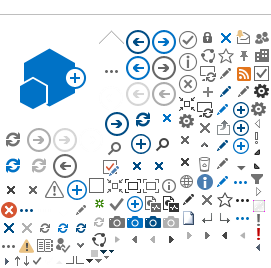Compare
There are no other study programmes for comparison
 | Loading… |
Search study programmes for comparison:
Compare
Image Design
Institutions providing this programme
Programmes with similar name
Programmes granting same qualifications
Summary of the Profile
General Description:
Objective(s) of a study programme:
To train a fashion design professional capable of creating a coherent image, adapting it to the individual needs of the client and implementing it according to the principles of internal and external coherence.
Learning outcomes:
Understands the basic concepts of image design, its historical and contemporary development, its peculiarities and its links with other art forms.Knowledge of management, company accounting and legal principles, and human safety
requirements related to professional activities.
Able to analyse, critically evaluate and summarise information to implement creative ideas.Able to carry out image design research by assessing market needs.Able to develop and visualise image design ideas and to experiment in response to client needs. Plans the phases of an image design project, anticipating the direction and resources of the project;
Able to design an image of an individual/group of individuals as a harmonious whole. Able to communicate in the national and correct foreign professional language by presenting
creative ideas and/or projects using visual communication and digital technologies and by presenting a portfolio of activities. Able to work as part of a team, taking responsibility for his/her own performance and that of his/her subordinates;
Able to carry out an image project in collaboration with other professionals, being aware of the moral responsibility for creative activities. Able to study, make decisions, plan and reflect independently, recognising the importance of
lifelong learning.
Activities of teaching and learning:
Lectures, presentations, discussions, seminars, demonstrations, practical exercises, group work, literature analysis, project development, etc.
Methods of assessment of learning achievements:
Teaching and learning outcomes are highlighted through a cumulative assessment system. A ten�point criterion scale is used to assess knowledge and skills. The final grade may consist of a number of components collected in the course of study (mid-term tests, independent work, examination or project). Depending on the complexity of the subject and its impact on the achievement of the learning outcomes, the components of the cumulative assessment and their
weightings shall be determined by the subject teacher. For each course of study, the lecturer determines and informs the students at the beginning of the semester about the impact (in
percentage terms) of each component (assignment, paper) on the final grade and formulates the assessment criteria for each intermediate assignment.
Framework:
Study subjects (modules), practical training:
Entrepreneurship, Psychology, Oral and Written Communication, Art History and Costume
Anthropology, Fundamentals of Association Composition and Design, Materials Science and Fundamentals of Sewing Constructions, Computer Applications 1, Computer Applications, Aesthetics, Image Composition, Specialized Drawing
Specialisations:
Optional courses:
Knowledge can be deepened by choosing study subjects from the general list of elective subjects of the college.
Distinctive features of a study programme:
The Image Design study programme is focused on the systematic, holistic education of a specialist - theoretical, artistic and managerial knowledge combined with practical application, developing artistic aesthetic taste. This is guaranteed by the unique place of study - Kaunas College of Arts Academy, where the subtleties of art are taught, exhibitions, plein-air exhibitions, symposia, international conferences, artistic educational projects, etc. are organised.
Access to professional activity or further study:
Access to professional activity:
A Professional Bachelor of Arts degree will give graduates a wide range of career options in the creative industries. Opportunities include: fashion and modelling, advertising and marketing, media and entertainment, political communication, beauty and styleGraduates can work either individually in their own creative practice or in collaboration with a variety of organisations or agencies.
Access to further study:
After completing their undergraduate studies, graduates can continue their studies in postgraduate arts programmes both in Lithuania and abroad. For postgraduate studies, some countries or programmes may require additional courses relevant to the field of study, according to the rules set
by the other higher education institution.
